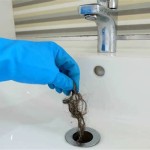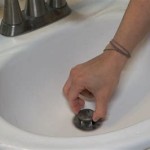Old Eggs Sink Or Float: Understanding Egg Density and Freshness
The behavior of eggs in water, specifically whether they sink or float, is a commonly used method to gauge their freshness. While it isn't a foolproof indicator, the principle behind this simple test is rooted in the physics of buoyancy and gas exchange that occurs within an egg over time. An understanding of the factors influencing egg density, as well as the limitations of the float test, can provide valuable insight into egg quality.
The "sink or float" test relies on the concept of density, which is defined as mass per unit volume. An object will float in a liquid if its density is less than the density of the liquid. Conversely, an object will sink if its density is greater than the liquid's density. The density of a fresh egg is influenced by the proportions of its different components: the yolk, albumen (egg white), shell, and air cell. As an egg ages, changes occur within these components, primarily involving the expansion of the air cell and the alteration of the albumen's composition. These changes affect the overall density of the egg, influencing its buoyancy in water.
The Role of the Air Cell in Egg Buoyancy
A crucial component affecting an egg's ability to float is the air cell. This air cell is a pocket of air that forms between the inner and outer shell membranes at the wider end of the egg. In a freshly laid egg, the air cell is typically very small, almost negligible. However, as the egg ages, moisture and carbon dioxide escape through the porous shell, and air replaces them. This results in a gradual increase in the size of the air cell.
The expanding air cell directly reduces the overall density of the egg. Air is significantly less dense than the yolk, albumen, and shell. As the volume of air inside the egg increases, the average density of the entire egg decreases. If the air cell becomes sufficiently large, the egg's overall density will eventually fall below the density of water, causing it to float. Therefore, an egg that floats is often interpreted as being older because its air cell has had more time to expand.
It's important to note that the rate at which the air cell expands is influenced by storage conditions. Eggs stored at room temperature will experience a more rapid expansion of the air cell compared to eggs stored in a refrigerator. This is because higher temperatures accelerate the movement of moisture and gases through the shell. Therefore, the "sink or float" test should be considered in conjunction with information about how the eggs were stored.
Changes in Albumen Affecting Egg Density
Besides the air cell, the albumen, or egg white, also undergoes changes as the egg ages, impacting its density and texture. The albumen consists of two layers: a thick, viscous layer and a thin, watery layer. In a fresh egg, the thick albumen comprises a larger proportion of the total albumen volume. This thick albumen provides support to the yolk, keeping it centered within the egg. This contributes to the egg’s quality during cooking.
As an egg ages, the proteins within the albumen begin to break down, a process known as denaturation. This denaturation causes the thick albumen to become thinner and more watery. The thinner albumen also occupies a larger volume than the thick albumen. This increase in volume, coupled with the loss of protein structure, can make the egg less dense overall. However, the effect of albumen changes on egg density is generally less significant than that of the air cell expansion.
Furthermore, the pH of the albumen increases over time. When an egg is freshly laid, the albumen has a relatively acidic pH. As the egg ages, carbon dioxide escapes through the shell, leading to an increase in pH. This increase in alkalinity can further contribute to the breakdown of proteins in the albumen, exacerbating the thinning process. This thinning effect can also affect the appearance of the egg when it is cracked, with older eggs spreading out more than fresh eggs.
Limitations of the Sink or Float Test and Other Indicators of Egg Freshness
While the "sink or float" test can provide a general indication of egg age, it has limitations and should not be the sole criterion for determining whether an egg is safe to consume. Other factors, such as bacterial contamination, can affect egg quality regardless of whether it sinks or floats. Salmonella, for instance, is a common bacterium that can contaminate eggs, and its presence is not detectable through the float test.
The egg's shell condition is another important factor to consider. Cracks in the shell can allow bacteria to enter the egg and compromise its freshness, regardless of whether the air cell is small or large. Cracked eggs should always be discarded, as they are more susceptible to contamination.
The "sell-by" date stamped on the egg carton provides a better indication of freshness than the "sink or float" test. The "sell-by" date indicates the date by which the eggs should be sold, and eggs are usually safe to consume for several weeks after this date, provided they have been stored properly in the refrigerator. Following proper storage guidelines is crucial for maintaining egg quality and minimizing the risk of bacterial contamination.
Visual inspection of the egg after cracking it open can also provide clues about its freshness. A fresh egg will have a firm, rounded yolk that sits high in the center of a thick, viscous albumen. An older egg will have a flatter yolk and a thinner, more watery albumen that spreads out over a larger area. The presence of any unusual odors or discoloration should also be a cause for concern, and the egg should be discarded.
In summary, the "sink or float" test can be a quick and easy way to get a general idea of an egg's age. However, it is not a definitive test of freshness or safety. Considering the "sell-by" date, shell condition, and visual and olfactory examination of the egg after cracking it open will provide a more comprehensive assessment of egg quality. Proper storage practices also play a vital role in maintaining egg freshness and preventing bacterial contamination.
Ultimately, the principle behind the "sink or float" test is rooted in the understanding of gas exchange and the changes in the albumen composition that occur in an egg over time. This test represents a simplified application of density principles and should be viewed as one of many tools used to assess egg quality, not as a definitive indicator of an egg's safety for consumption.

Why Bad Eggs Float And Good Sink

Why Do Old Eggs Float Scienceabc

Egg Float Test

How To Tell If An Egg Is Fresh Science S

Egg Float Test Is It A Myth The Happy Chicken Coop

Fresh Egg Test Sink Or Float
They Say A Fresh Egg Will Sink In Water And An Old Float Because Air Seeps Through The Porous Shell But If Does Not Expand Amount

Egg Float Test Is It A Myth The Happy Chicken Coop

Eggs Sink Or Float Easy Science Activity For Kids Madeformums
How To Tell If Eggs Are Bad Just A Pinch Recipes







